Nowadays, many appliances in our life use microcontrollers. For example, appliances like cell phones, televisions, refrigerators, washing machines, and children's toys that flash LEDs at the push of a switch. So, what exactly does the microcontroller do in these appliances?
Microcontroller is the key to the action of these appliances, is to direct the operation of the hardware. For example, it receives input signals from buttons or keys and directs the motor and LCD peripheral function circuits to act according to a pre-programmed program.
A microcontroller is composed of CPU, memory, peripheral functions and other parts. If a single-chip microcontroller is compared to a human being, the CPU is responsible for thinking, the memory is responsible for memory, and the peripheral functions are equivalent to the sensory system for vision and the nervous system for controlling hand and foot movements.
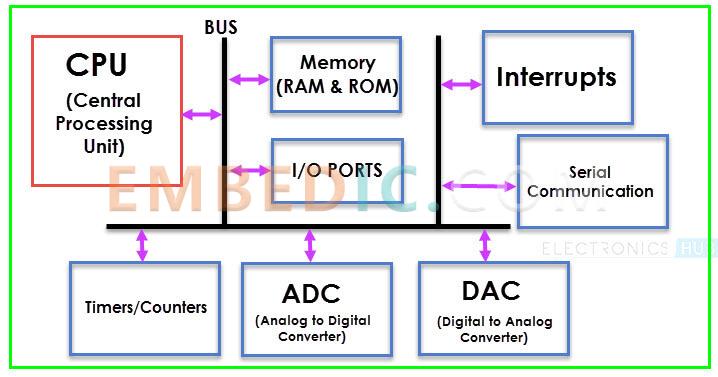
A single-chip microcontroller is a microprocessor that integrates the CPU, ROM, RAM, oscillator circuit, timer and serial I/F into a single LSI. The single-chip microcontroller is configured with some of the main peripheral circuits of the system, and the large-scale integrated circuit formed is called system LSI.
The CPU needs to know where in memory the instruction to be executed is stored when it reads it. This location information is called an address (equivalent to a home address). The program counter (PC) is the register where the address is stored.
Usually, the PC is designed to increment by 1, which means that when the CPU executes an instruction in the 0000 address, the PC will automatically add 1 and become the 0001 address. Every time an instruction is executed PC will automatically add 1 to point to the address of the next instruction. It can be said that the PC determines the order of program execution.
The instruction decoding circuit is to decode the meaning of the instructions read from memory. The operation circuit is operated according to the decoding result. Therefore, the instruction decoding circuit works by restoring instructions from instructions that have been symbolized (encrypted).
An operational circuit, also known as an ALU (ArithmeTIc and Logic Unit), is a circuit that performs arithmetic operations. It can perform arithmetic operations such as addition and multiplication, and logical operations such as AND, OR, and BIT-SHIFT. The operations are performed under the control of the command decoding circuit. Usually, the composition of arithmetic circuits is complex.
CPU internal registers are the place to store temporary information. There are general-purpose registers that store operation values and operation results, and there are also some special registers, such as the flag register that stores operation flags. In other words, when an arithmetic circuit performs an operation, it does not do the operation directly in memory, but copies the data in memory to the general-purpose registers and performs the operation in the general-purpose registers.
It is the memory device of the microcontroller, which mainly remembers the program and data, and is roughly divided into two categories: ROM and RAM.
ROM
ROM (Read Only Memory) is the abbreviation for read-only memory. ROM is mainly used to store user programs and constants that remain constant during program execution.
Most Renesas microcontrollers use flash memory as ROM, because flash memory not only can be used like ROM without losing data even if the power is turned off, but also allows data modification.
RAM
RAM (Random Access Memory) is short for Random Read/Writeable Memory. Data can be read and written at any time, but the data saved in RAM disappears when the computer is turned off. It is mainly used to store the variables in the program.
SRAM is often used as internal RAM in single-chip microcontrollers. SRAM allows high-speed access, however, the internal structure is too complex to achieve high-density integration and is not suitable for use as high-capacity memory.
In addition to SRAM, DRAM is also a common RAM. DRAM has a structure that is easier to achieve high-density integration and, therefore, has a larger capacity than SRAM. However, it is more difficult to install high-speed logic circuits and DRAM on the same chip, so it is generally rarely used in single-chip microcontrollers and is basically used as a peripheral circuit.
There are many applications for microcontrollers that range from consumer electronics to safety devices. Here’s a shortlist of them,
Let's use a circuit that lights up an LED as an example. The circuit without the microcontroller is a simple circuit consisting of an LED, a switch and a resistor, as shown in the figure below.

Obviously, the circuit with a microcontroller is much more complex and it takes effort and money to design the circuit. It seems that there is no advantage to using a microcontroller.
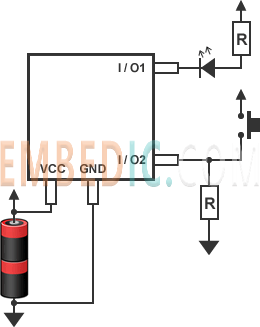
Notice: If we let the circuit to do some more complex operations, what will happen. For example: if you want the LED in the press of a switch, after a period of time to light up or off, then, for the circuit installed with a microcontroller, just change the program in the microcontroller can be, and do not need to change the original circuit. On the other hand, for a circuit without a microcontroller, it is necessary to add a timer IC to the meta-circuit or to form a logic circuit with a standard logic IC and FPGA to achieve this function.
In other words, when changing and adding new functions, circuits with a microcontroller are obviously easier to implement. This is exactly the reason why electrical devices use microcontrollers. Microcontrollers can be a real handy thing!
In the air conditioners, the MCU receives analog inputs through an external ADC. Temperature sensing is done by an onboard RTD and thermistor, and an external EEPROM is used to store data to set temperature value. With PWM and comparators, the MCU controls external BLDC motor and fan. It also receives filter inputs that are used for purification.
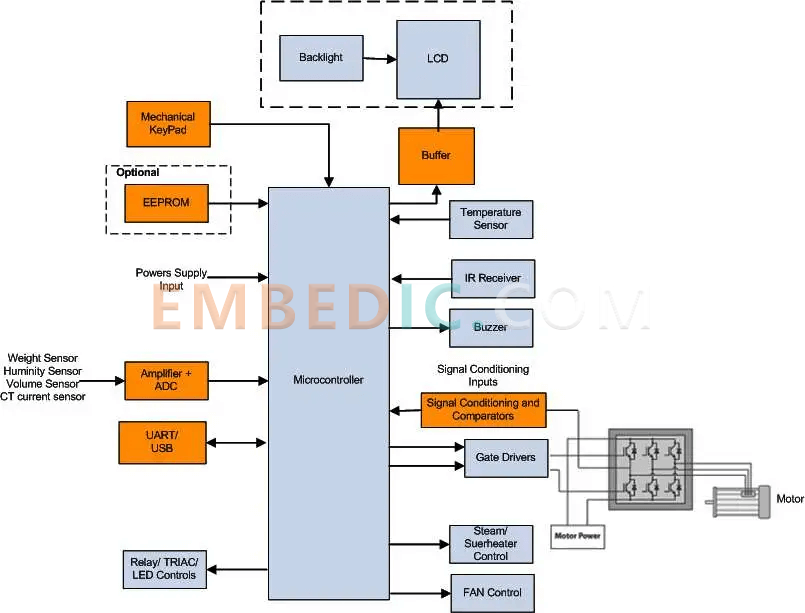
The MCU controls the electric motor as well as compressor based on the temperature established by the customer. The MCU additionally makes use of a relay driver and TRIAC motorist wiring to turn off high-voltage line AC inputs to the system. It uses clock and timers to establish rest mode, vehicle switch-off feature, and 24-hr on/off timer feature. It utilizes PWM-based buzzer for producing tones at various regularities. The MCU likewise manages self-diagnostic functions, and consists of auto restart and over-current protection. Throughout power failure, it instantly brings back the air conditioning unit to previous setups.
In a cleaning equipment, the MCU receives analog inputs (water level sensing unit, water solidity sensor, humidity sensor, door open sensing unit, laundry tons sensing unit, optical sensing unit, cleaning agent density sensing unit, tons Discrepancy sensor, and volume sensing unit) via an exterior ADC. Temperature level picking up is done by an onboard RTD as well as an outside EEPROM is made use of to store information, such as tailored laundry program, memory back-up, youngster lock, and also faves. The microcontroller permits the washing equipment to adjust the water and also cut power automatically.
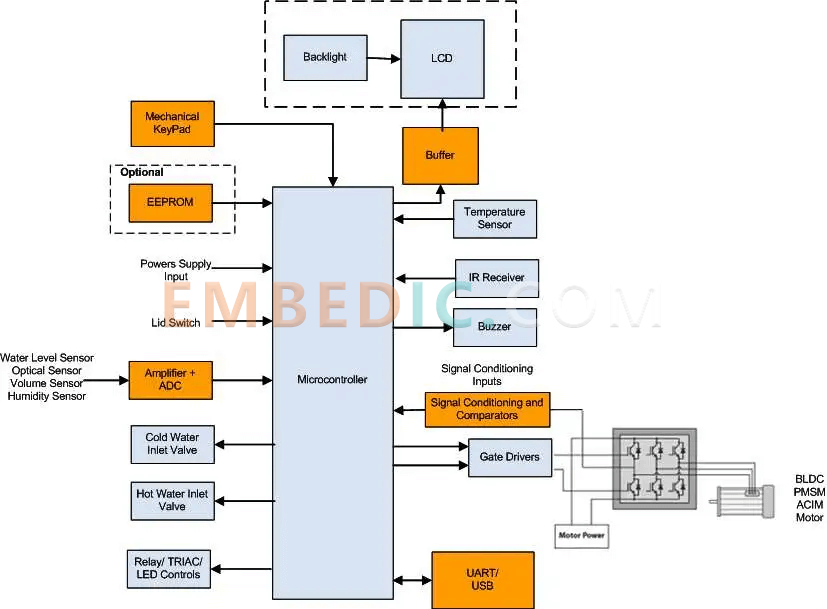
The MCU also controls self-diagnostics, consisting of water failing, spin failing, water drainage failing, child lock, overflow defense, as well as door cover open. Clocks and also timers are utilized to carry out sleep setting and also add delays (hold-up begin problem) in operations. A buzzer (PWM-based) generates tones at different regularities as well as additionally provides alert tones throughout overload problems. The MCU also instantly shuts off the equipment after washing is finished, thus saving power.
In microwave, an MCU obtains analog inputs from weight sensor, humidity sensing unit, volume sensing unit, CT existing sensing unit through an outside ADC. Temperature noticing is done by an onboard RTD as well as thermistor, as well as an outside EEPROM is made use of to keep data, such as kid lock and also reprogramable food preparation data.
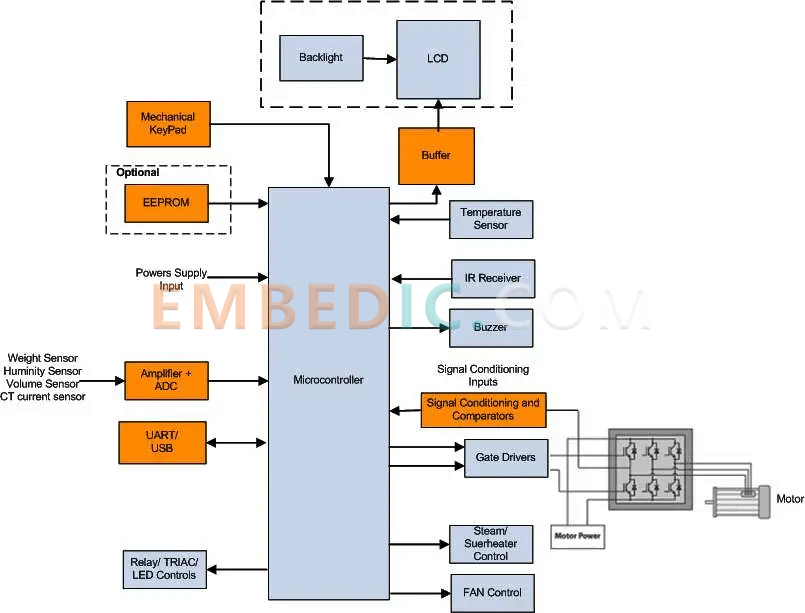
The MCU manages self-diagnostic features as well as includes automobile reboot, car deodorizer, auto security, and overflow protection. During power failing, it immediately restores the microwave oven to the previous setups
The MCU uses a clock and also timers to execute sleep setting and include delays in operation. It utilizes a PWM-based buzzer for creating tones at various regularities. It also instantly turns off the microwave ovens when operation is finished or goes into sleep setting when not in use/not set (by user), therefore conserving overall power.
Manufacturer: Texas Instruments
IC DSP FIX/FLOAT POINT 361NFBGA
Product Categories: DSP
Lifecycle:
RoHS:
Manufacturer: Texas Instruments
IC DGTL MEDIA SOC 337NFBGA
Product Categories: SOC
Lifecycle:
RoHS:
Manufacturer: Texas Instruments
IC DGTL MEDIA SOC 337NFBGA
Product Categories: SOC
Lifecycle:
RoHS:
Manufacturer: Texas Instruments
IC DSP FIXED-POINT 196NFBGA
Product Categories: DSP
Lifecycle:
RoHS:
Looking forward to your comment
Comment